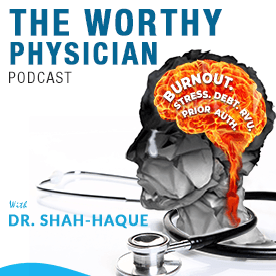The Science of Fun: How Play Restores Presence, Empathy, and Joy
What Stillness
by Laura Foley
Lily pads ripple in summer breeze,
as if they bloomed for me,
revelation-white clouds float
through a divine blue sky.
No human voices break
the stillness of this hilltop pond
where I come to forget
the foolishness of homo sapiens—
where a trout leaps from the lake,
splashes shining down,
opening a glimpse into
the world below the surface.
My dog, wet from her swim
between the visible and the hidden,
shakes dots of sparkling light
from her dark coat,
forming a watery aura.
What sunlight does to water,
stillness does to us.
Rediscovering Wonder: The Case for Play in Medicine
Demanding work can quietly flatten curiosity into obligation, turning bright weeks into a gray blur. For many clinicians, the shift occurs gradually—a thousand small compromises, a steady accumulation of sleep debt, and the constant pressure of productivity metrics. What begins as a calling becomes a checklist. The wonder that once drew us to medicine gets buried under protocols, messages, RVUs, and endless charting. When wonder fades, joy often follows, leaving us efficient but empty.
This episode explores why curiosity and fun are not extras—they are essential tools for building resilience, fostering empathy, and achieving sustained excellence. By treating play as restorative work, we rebuild presence, the foundation of good medicine. Presence sharpens clinical thinking, deepens connection, and renews compassion.
The Power of Presence
Children model presence effortlessly. They play, marvel, and lose themselves in color and sound, bouncing back from setbacks that would derail most adults. When we intentionally enter that state—even briefly—we quiet the relentless ticker of tasks and widen our bandwidth of attention.
This shift isn’t frivolous. Presence expands diagnostic sensitivity, rebuilds patience, and tempers reactivity under challenging conversations. It refreshes our capacity for compassion—the soft skill that becomes hardest to access when we’re depleted. In this light, fun is not indulgence; it’s a strategic reset for the nervous system, lowering stress and reopening access to creativity.
A Lesson from a Bluegrass Afternoon
One hot, crowded afternoon at a local bluegrass festival reminded me how play works in real time. The conditions were far from ideal: heat, humidity, the threat of rain, and the chaos of herding kids through a muddy parking lot. And yet, once the music started, attention became effortless. Fiddles, laughter, and color wove together with the hum of community. Snacks and water handled the logistics—curiosity dealt with the rest.
The kids modeled what adults forget: to look, listen, wander, and laugh without multitasking. That state does more than feel good; it restores perspective. After hours of immersion, my mind felt clearer, kinder, and more patient. It was proof that the mind we bring to the clinic is shaped by how we spend our hours outside it.
The Clinical Connection
In the exam room, the stakes are human. Every appointment is a meeting between two nervous systems, and our presence is part of the treatment. Physicians pour themselves into these encounters—listening, deciding, documenting—often amid interruptions and time pressure. Over time, that output demands intentional input that goes beyond sleep or exercise; it requires joy.
Fun reintroduces flexibility. It loosens the tunnel vision that stress creates and broadens pattern recognition. In complex care, that wider lens translates into better questions, cleaner differentials, and gentler explanations. Patients can feel when their clinician is calm, attentive, and genuinely curious.
The Physiology of Laughter
Laughter is medicine for the healer. A full-body laugh interrupts rumination, resets autonomic balance, and releases stored tension from heavy clinical days. It’s accessible self-care—a silly movie, a comedy set, a ridiculous meme after the kids are asleep. No moralizing, no guilt. The point isn’t refinement; it’s relief.
Humor dissolves the wall between “provider” and “person,” creating space for humility and warmth—qualities patients instinctively trust. If you can’t recall your last genuine laugh, that’s not failure. It’s feedback. Your nervous system is asking for joy.
Three Practical Reframes
Micro-moments of curiosity.
Step outside for ten minutes and notice how the leaves are changing. Count shades of green on a walk. In a familiar room, find one detail you’ve never seen. These small practices sharpen attention and return you to your senses.Schedule fun.
Treat joy like a consult—if it’s on the calendar, it’s more likely to happen. Whether it’s a local concert, a walk in the rain, a pottery class, or thirty minutes with an old guitar, give it form and time.Permission to be silly.
Watch the show that makes you snort-laugh. Let go of the polished image. Humor is a pressure valve; use it without apology.
Reclaiming Wonder
George Bernard Shaw once wrote, “We don’t stop playing because we grow old; we grow old because we stop playing.” When life becomes all seriousness and structure, time accelerates, and joy begins to drain away. Play slows it down. It anchors memory, deepens connection, and makes ordinary hours feel abundant again.
Here lies the paradox: when we loosen our grip on productivity outside of work hours, we often become better clinicians during work hours. Our minds grow clearer, our listening sharper, and our empathy steadier. Curiosity returns—and with it, the joy that makes medicine not just a profession, but a profoundly human art.


